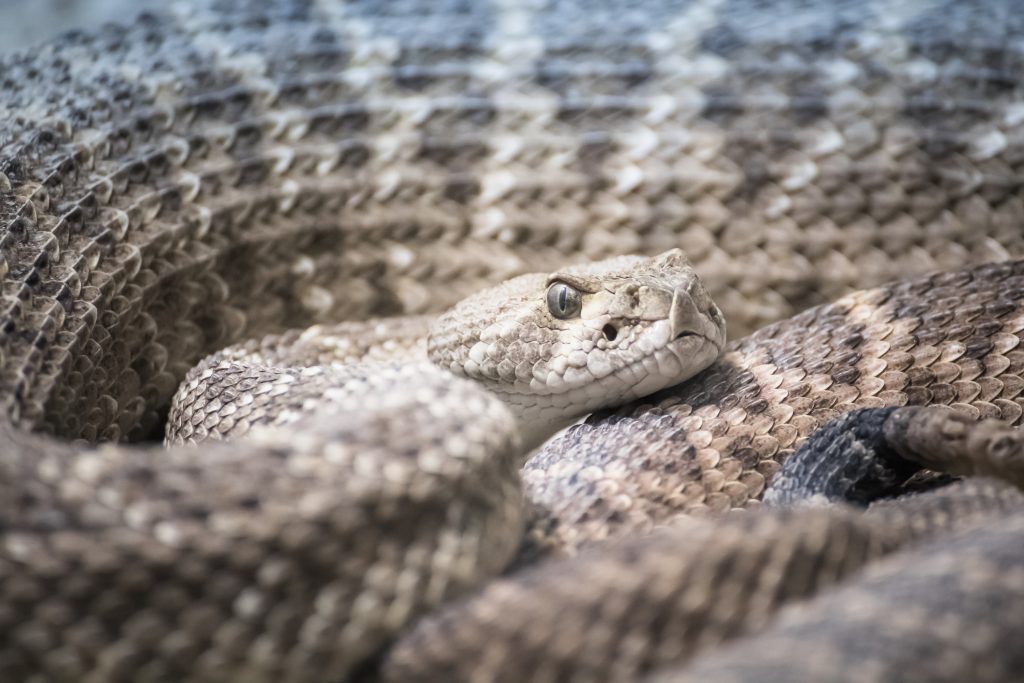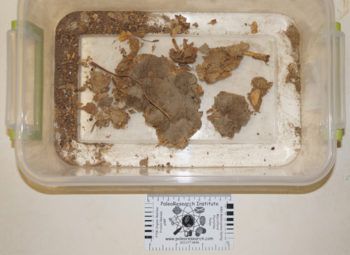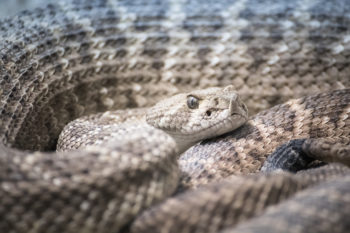Snake Fil-A: Study Shows Early Native American Ate An Entire Rattlesnake
Department of Anthropology researchers examine fossilized fecal material from 1,500 years ago from West Texas shelter and confirm amazing findings about people in the region.

By Keith Randall, Texas A&M University Division of Marketing & Communications
Maybe it was just a very hungry person, or it might have been part of a religious experience, but an ancient native American ate an entire rattlesnake about 1,500 years ago, according to a study led by two Texas A&M University researchers.
Elanor Sonderman and Morgan Smith, two doctoral students in the Department of Anthropology at Texas A&M, along with colleague Crystal Dozier of Wichita State University, have had their findings published about the incident in the current issue of the Journal of Archaeological Science.
The team examined coprolites – the scientific name for fossilized human fecal material – first discovered in the 1960s by an earlier researcher who found them during the construction of the Amistad Dam in far west Texas, and it is believed the coprolites originated in the Conejo Shelter, an area widely known where early settlers of the time lived.
“The shelter itself is on private land,” Sonderman, who earned her doctorate with a paper about the findings, said. “It is about 170 feet wide and 40 feet deep. The study of coprolites is a key to understanding how early peoples lived and what their daily meals were like.”
“The coprolites analyzed are about 1,500 years old, which we determined from carbon dating, and they tell an interesting story,” Smith said. “We found rat bones in them, and also some prickly pear cactus the person ate, but also snake fangs and bones and other skeletal remains. It appears he or she consumed an entire snake, most likely a western diamondback rattlesnake.”
The team believes the snake remains provide two likely scenarios.
“First, the person – we don’t know if what was a man or woman – ate the snake as-is, the whole thing,” Smith said.
“Or second, it was some sort of ritual. Droughts were common then as they are today, and snakes – especially rattlesnakes – were viewed as ‘drought demons’ and these had to be literally slayed to release water and bring the drought to an end.
“It could be compared to a rain dance today.”
And it’s not a case of déjà poo: The team also believes their findings could be the first direct evidence of venomous snake consumption by a human.
“There are records from these regions, from the Hopi to the Aztecs, that have ceremonies using snakes,” said Sonderman.
“In the case of the Aztecs, snake rituals seem to have been used during ceremonies honoring the rain god, Tlaloc. We can’t know for sure why the person who produced the coprolite ate the snake, but the rock art in the Lower Pecos region also exhibits snake iconography.”
Smith said the findings open new doors for future coprolite discoveries, even those that that have been sitting on shelf for decades like these.
“It give us more clues about how early humans lived in the area,” he said, “and there are bound to be more clues out there.”
The study was funded by the Summerlee Foundation Texas History Grant and the Texas A&M Department of Anthropology.
Originally posted here.


